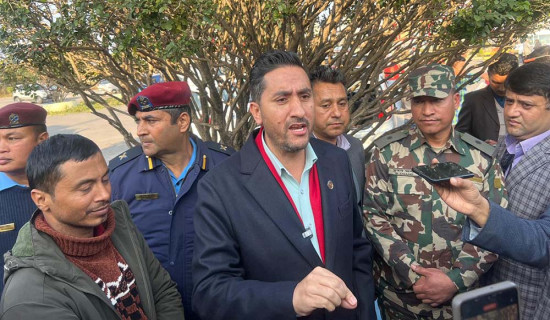- Saturday, 3 January 2026
Ensure Equity In HIV/AIDS Services
Globally, HIV still remains a serious public health challenge. Moreover, it is also a barrier to sustainable human development. The vulnerability to and risk of HIV infection vary between populations and places, as does people’s access to HIV prevention and treatment services. Due to multiple intersecting socio-political, cultural, and economic inequalities, people still do not have equitable access to HIV services in many countries. In this context, AIDS 2024, the 25th International AIDS Conference was recently held in Munich, Germany. Perhaps it was the largest gathering on HIV and AIDS in the world that wholeheartedly welcomed a range of stakeholders from governments, civil society, development partners, civil society activists, human rights advocates, and people living with HIV within and across countries.
In essence, the AIDS 2024 profoundly showcased exciting community-led innovations, success stories in prevention, treatment and care along with some scientific breakthroughs and pressing challenges to lower the burden of the epidemic across the countries. Largely, activists working in the area of HIV response have drawn a closer attention to pressing issues of choice, access and equity. One of the concerns during AIDS 2024 is critical need to scale up the Person-Centred Care (PCC) approach that improves health services and meets the changing needs, priorities and preferences of each person living with or affected by HIV. It aims to promote healthcare that empowers clients which is largely shaped by many aspects of people’s intersectional identities, such as gender, age, sexuality and socio-economic status.
Uneven progress
While global HIV prevention response is proceeding at an encouraging pace, the progress is still uneven across and within regions. According to a recent report of UNAIDS, about 39 per cent fewer people acquired HIV globally in 2023 compared with 2010, with sub-Saharan Africa achieving the steepest reduction. Nonetheless, an estimated 1.3 million people acquired HIV in 2023. Three regions are experiencing rising numbers of new HIV infections: Eastern Europe and central Asia, Latin America, and the Middle East and North Africa. The report further suggests that approximately 30.7 million of the estimated 39.9 million people living with HIV globally were receiving antiretroviral therapy in 2023. The global treatment coverage stood at 77 per cent in 2023. It was only 47 per cent in 2015. This implies significant progress in terms of advancing access to treatment for people living with HIV worldwide.
Despite notable progress, more worrying part of the global response is slow progress in reducing social discrimination and stigma, and realistically addressing socio-political, cultural and economic inequalities, and gender-based violence. People living with HIV and key populations greatly suffer from such persistent barriers and inequalities. Though HIV related stigma and discrimination has declined, it is still common in many countries. Gender-based inequalities are considered as significant barriers in prevention, treatment and care services. Despite some progress in supportive laws and policies, effective implementation is a key challenge in many low-income countries.
In Nepal, HIV prevention, treatment and care services are largely guided by National Strategic Plan (2021-2026) which has major emphasis on health systems strengthening, capacity enhancement of civil society organisations, strengthening networks of key populations for resilient community systems, and ensuring universal access to prevention, treatment and care services in an integrated approach. When integrated, HIV and other health services can improve health outcomes, strengthen health systems, and support progress towards universal health coverage. More notably, the Global Fund and other technical partners such as WHO, UNAIDS, FHI 360, AHF and few others are supporting national HIV response to ensure people living with HIV and other key populations have equitable access to HIV services in the communities.
The interventions also include significant efforts to address societal and structural barriers fuelling the epidemic. In all aspects of HIV programming, it is worth noting that gender, equity and human rights are central priorities for actions. More specifically, the coordinated efforts of national response have been instrumental in reducing HIV prevalence among key populations, enhancing access to cash transfer to affected children, and advancing differentiated HIV services including community-led testing and index testing. In addition, people living with HIV have access to community and home-based care and facility-based support services through community care centres.
Innovations
Undoubtedly, these innovations and practices have profound impacts on key populations in seeking treatment and care services at the community. More importantly, community-led monitoring projects have involved networks of people living with HIV, key populations and other communities to systematically monitor and report on how services, interventions and policies are implemented and experienced by the communities and health care providers. This offers important opportunities to review evidence with service providers, planners and policy makers for actions.
Moving towards a sustained national response, we need more concerted efforts to mobilise adolescents and youth, key populations, civil society, media and private sector, and secure adequate local resources in the federal context. Participatory and inclusive planning for HIV response should be a high priority agenda for local governments to ensure continuity and sustainability of HIV services in the communities. In order to further advance choice, access and equity in HIV services, a renewed political commitment is critical that addresses intersecting social, cultural, economic and political inequalities driving HIV pandemic within and across societies. Moving closer to the goal of ending AIDS as a public health threat by 2030, a commitment enshrined in the Sustainable Development Goals (SDGs) has a long way to go as it essentially needs people-centred response at large.
(Bhandari is a health policy analyst.)

















